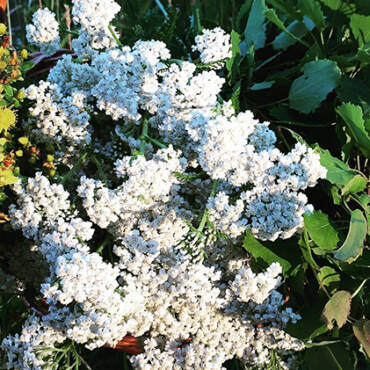When travelling around India and taking part in various Ayurvedic cooking courses, I got introduced to this amazing superfat that I’ve become absolutely obsessed with. We use it pretty much everyday in the kitchen. The great news is that it’s easy to make, delicious and great for your health – couldn’t get much better than that 😉
This health food, surprisingly, is still relatively uncommon in the Western world but widely used throughout the Indian subcontinent, in Asia and in certain parts of Africa.
Below I’ve put together some information on what it actually is, why it’s so healthy and how to make it. You can find different brands of ghee sold in health shops all around but it can be quite expensive. Making it yourself is a great way to guarantee pure quality and it will save you the pennies.
WHAT IS GHEE?
Ghee is clarified butter where the milk proteins are removed from the pure healthy fats in the butter, through a slow heating process. This means that ghee is suitable for lactose intolerant people and those sensitive to casein (a protein found in animal milk). Ghee has medical values and healing properties and has since ancient times played an important role in the traditions of Ayurveda – India’s ancient system of holistic health that is both preventative as well as curative to its application.
WHY IS IT SO GOOD?
This ancient butter substitute not only is flavourful and delicious but also has many amazing benefits to your health. Ghee is composed primary of fats, including Omega 3. These fatty acids help decrease unhealthy cholesterol, improve memory and lubricate the connective tissues when consumed in appropriate amounts. Furthermore, it is a digestive that helps improve absorption and assimilation of the digestive system.
Ghee also contains significant levels of Vitamin A, D and E and is a great source of Vitamin K. Like coconut and olive oil, it’s great for teeth, hair, skin and nail. In Ayurvedic medicine, ghee often serves as a base for herbal creams to relieve skin rashes and burns.
When it comes to cooking, ghee doesn’t burn easily and has a higher smoking point than butter. This makes it great for cooking, in particular sautéing and frying.
HOW TO MAKE IT
Ingredients:
– Good quality organic unsalted butter
Equipment:
– Medium sized sauce pan
– A fine wire mesh strainer
– Cheesecloth
– Metallic straining spoon/spatula or normal spoon
– A bowl or measuring jug
– A clean glass jar with lid
- Cut up the butter into cubes
- Place the butter cubes in the sauce pan on medium heat until it melts
- Turn down the heat and let simmer for 10-15 minutes on low heat while gently stirring from time to time with no lid on
- While simmering the butter will go through a few stages – first it will create a thick white foam layer on the surface. Then it will bubble up and as the bubbles increase the foam layer will become thinner. The butter will at this point turn a nice golden colour as the milk solids, which are at the bottom, will start to brown. Keep a close eye at the pan at this stage, as it’ll burn easily. At this point both bubbles and foam will reoccur on the surface, the liquid is bright gold in colour with reddish brown pieces of milk solids on the bottom and there will be a slightly nutty smell – this is when the ghee is done.
- Take the pan off the heat immediately and let it cool for 2-3 minutes
- When it has cooled, take off the layer of white foam with the straining spoon or normal spoon
- Pour the ghee into the bowl or measuring jar through the fine wire mesh strainer covered by several layers of the cheesecloth to be able to discard the brown milk solids
- Now pour the filtered ghee into the glass storage jar






Ghee can be kept on the kitchen shelf and does not need to be in the fridge. It will last for up to a month when stored at room temperature and longer in the fridge. Be sure to use clean utensils when spreading/cooking with your ghee to prevent conditions for bacteria to grow and spoil the ghee.
Happy ghee making to everyone 😉 also, let me know if you have any questions regarding the process and I’ll be happy to answer the best I can!!
-Maxine






Add Comment